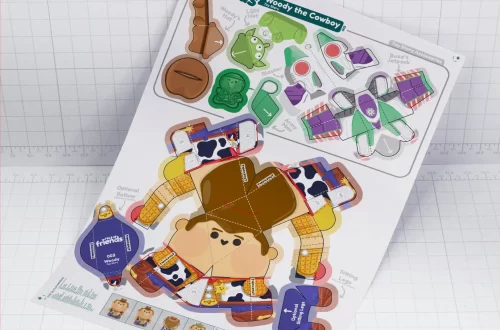Toy swords have captivated imaginations for generations, transforming backyards into battlefields and bedrooms into castles. But with so many options available, navigating the world of toy swords can be a challenge. This guide will equip you with the knowledge to become a master yourself, selecting the perfect sword for your child’s age, play style, and adventurous spirit.
Part 1: Choosing Your Weapon
1. Age and Development:
Little Warriors (3-5 years old): For young children, prioritize safety and ease of use. Choose lightweight, brightly colored swords made of soft plastic with blunt edges. These promote safe, imaginative play without the risk of injury.
Aspiring Knights (6+ years old): As children mature, their interest in features and functionality grows. Consider swords made of sturdier plastic or even foam with some flexibility. These can withstand more vigorous play while maintaining safety. Look for swords with character themes, light-up features, or historical inspiration to pique their interest.

2. Play Style and Interests:
Active Combatants: When selecting a toy sword for energetic kids who love engaging in dynamic play, opt for a lightweight and easy-to-maneuver design that allows for swift and energetic movements. A straight-bladed sword is ideal for promoting free movement and broad swings, offering the perfect tool for action-packed battles and enhancing the overall excitement of their playtime adventures.
Creative Storytellers: For children who enjoy weaving imaginative narratives and engaging in elaborate role-playing games, consider choosing swords with unique designs, historical inspiration, or ties to their favorite characters or stories. These specialized sword designs can ignite creativity and inspire imaginative scenarios, serving as the catalyst for creative and immersive adventures that bring their favorite tales to life. By offering these specialized swords, parents can provide their children with the tools to craft and act out their own imaginative and captivating stories, fostering their storytelling skills and enhancing their play experience.
Part 2: The Art of the Blade
1. Safety First:
Material Matters: When it comes to toy swords, the material used is crucial for ensuring a safe and enjoyable play experience. Soft plastic or foam are the ideal materials for toy swords due to their lightweight and flexible nature, allowing for active play while minimizing the risk of injury. This makes them a much safer option compared to hard plastic swords with sharp edges or pointed tips, which have the potential to cause accidental injury during play, particularly with younger children.
Blunt is Best: It is important for all toy swords to have blunt edges and rounded tips to further reduce the risk of scratches or bruises during play. This design consideration is particularly crucial for younger children who might be less coordinated, as it minimizes the potential for accidental injuries while they engage in imaginative and active play. By prioritizing the use of toy swords with these safety features, parents can ensure that their children can enjoy their playtime without unnecessary risk.

2. Durability and Functionality:
Built to Last: When choosing a toy sword for your child, it’s important to consider their level of activity and play style. For highly active children, selecting a well-made sword constructed from sturdy plastic or thick foam is essential to ensure the toy can withstand frequent and robust use. On the other hand, for very young children, opting for softer, lighter weight materials may be more suitable, providing a safer and more manageable option for their play activities.
Weight and Balance: In addition to durability, the weight and balance of the sword are crucial factors to consider. A well-balanced sword is easier for children to handle, especially during extended play sessions, and can contribute to a more engaging play experience. For younger kids, a lightweight design is ideal as it allows for easier manipulation and reduces the risk of fatigue during play. Conversely, older children might prefer a sword with a bit more weight, providing a more realistic feel and adding to the overall enjoyment of their imaginative adventures. By taking these aspects into account, parents can select a sword that aligns with their child’s play style and preferences, ultimately enhancing their playtime experience.
Part 3: Exploring the Armory
1. Classic Plastic Swords:
These brightly colored, lightweight swords are specifically designed with preschoolers in mind, providing them with a safe and enjoyable way to engage in imaginative play. Available in a variety of sizes and designs, these toy swords cater to the diverse interests of young children and offer an affordable means of sparking creativity and active play. Parents can seek out packs that include multiple swords, enabling group battles and encouraging cooperative role-playing games that enhance social interaction and imaginative storytelling among children. This not only promotes physical activity but also fosters essential social and cognitive skills in a fun and dynamic play environment.
2. Foam Swords:
Crafted from soft, flexible foam, these toy swords are specifically designed to provide a safe and active play experience for children. The use of foam as a primary material ensures that these swords are lightweight and gentle on impact, making them an ideal choice for kids engaged in energetic and imaginative play. Additionally, the foam material allows for a certain degree of flexibility, mitigating the risk of injury during sword fights by absorbing some of the impact during play.
One of the appealing aspects of these foam swords is the vibrant range of colors and character-themed designs in which they are available. These eye-catching designs cater to a wide range of ages and interests, adding an element of excitement and personalization to the play experience. Whether emblazoned with bold colors or adorned with beloved characters, these swords spark creativity and imaginative play, encouraging children to immerse themselves in thrilling and adventurous scenarios.

Part 4: Beyond the Blade
1. Fueling Imagination:
Props and Costumes: In addition to toy swords, consider offering simple costumes, shields, or other props to further enrich your children’s imaginative role-playing experiences. Providing these additional accessories can elevate their play sessions, turning ordinary backyard battles into epic medieval clashes or thrilling intergalactic space adventures. By encouraging your children to dress up and use props, you can fuel their creativity and inspire them to fully immerse themselves in their imaginative endeavors. This not only fosters a deeper level of engagement but also allows them to explore different roles and characters, broadening their creative horizons and enhancing their storytelling abilities.
Themed Play Areas: Another way to spark your children’s imagination is by creating designated play areas that inspire their creativity. A simple blanket fort can be transformed into a medieval castle under siege or a spaceship ready for intergalactic travel. Similarly, a pile of pillows can double as a mountain range for adventurous exploration or a rugged terrain for exciting battles. These themed play areas provide a space for children to not only engage in imaginative play but also to create and explore new worlds, fostering their creativity and enriching their play experiences.
2. Promoting Active and Social Play:
Sword-fighting Games: Organize games that encourage movement and teamwork. Simple tag variations or capture-the-flag games can be adapted to incorporate toy swords.
Role-playing Scenarios: Help them develop storylines and characters for their pretend battles. This can improve their communication and social skills as they work together to create a narrative.
By considering your child’s age, play style, and safety, you can find the perfect toy sword to transform them into a fearless adventurer. With a little creativity, you can help them explore the world of knights and dragons, heroes and villains, all from the comfort of their own imagination.




